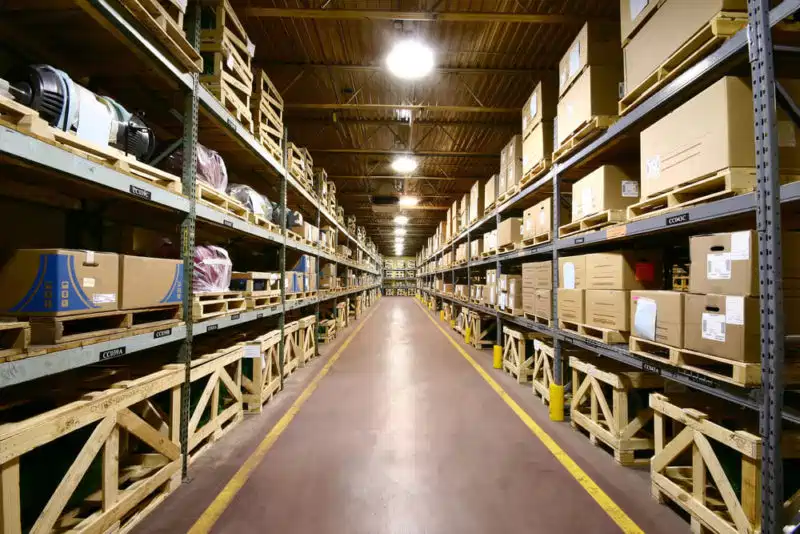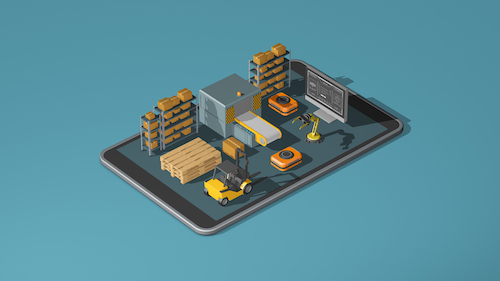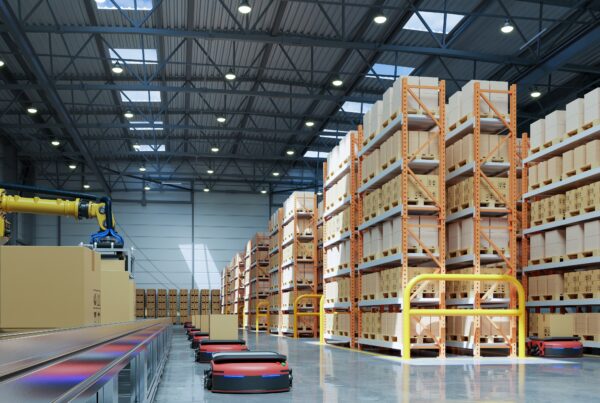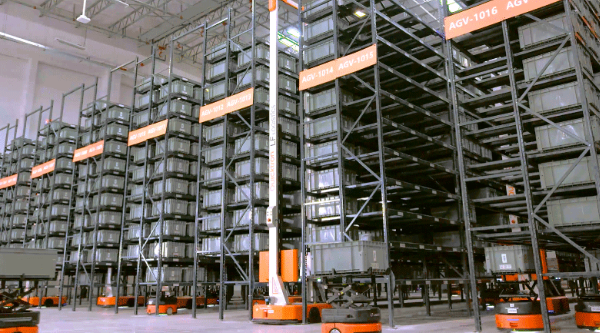Warehousing has evolved and adapted to today’s modern demands at a faster pace. Like with other industry changes, distribution warehouse design is transforming, pressured by a variety of shifts in advanced project trends. Today’s warehouses have grown into larger, higher, and well-organized facilities — each of those factors is key to determining how efficient a business can be.
What are the main functions of a distribution warehouse?
A distribution warehouse is a center for storing goods — for different types of individuals and businesses such as exporters, importers, manufacturers, etc. Such a facility, also plays a significant role in a business’s supply chain by carrying out the following functions:
- Unloading
Goods are unloaded and arranged for later inspection.
- Inspection
Once a packing list is made, the warehouse staff must confirm that everything in the list matches with the merchandise received.
- Put-away and Storage
After inspection, goods are stored in their specific racks for later distribution.
- Systems Receipt
Once the merchandise is stored, the quantities are inserted into the Inventory Management System (IMS).
- Documentation
Goods to be distributed must have their proper documentation such as an invoice, packing list, shipping documents, road transportation permits, etc.
- Grading and Packing
Modern warehouses provide packing, processing, and grading of goods.
- Risk Bearing
Warehouses must be designed to minimize the risks of theft, loss, fire, or damage.
How can the proper distribution warehouse design and layout help to perform its functions better?
Planning a proper distribution warehouse layout design is a crucial process as it influences the productivity of the warehouse. The layout design should maximize the use of all available space, smooth operations, boost productivity, and reduce expenses.

An optimized distribution warehouse design must also provide adequate storage for goods, reduce stock losses, and order time completion. The importance of distribution warehouse logistics is to ensure that the company’s goals are met, that customers feel confident their merchandise is well-taken care of, and that shipping is done on time — it is key to having a competitive edge in the industry.
Distribution warehouse layout and design peculiarities and tips:
A distribution warehouse should be designed to envision the number of loads of goods that will be received daily. Also, factors such as unloading, handling, shipping stations, and operating personnel offices must be taken into consideration.
Here are some tips that can be followed when starting a distribution warehouse:
Start with a schematic
Lay out all your plans on paper first based on current and future warehouse needs — remember that paper and ink is cheaper than retrofitting a whole structure.
Predict the amount of inventory to be stored
Know the size, shapes, and overall amount of the items to be stored for proper storage planning space.
Space calculation
The space must provide appropriate circulation paths for employees and merchandise handling, thus improving productivity.
Use a U-shaped product flow layout
This layout will adjoin shipping and receiving docks providing shared staff and material handling equipment.
Consider adding a mezzanine
A mezzanine can increase warehouse space without the additional cost and huge renovations.
Incorporate cross aisles
Cross aisles makes it easier and faster to move from one section to another in long and continuous warehouses.
Latest distribution warehouse design trends

The need for massive warehouses with high ceilings
High ceilings warehouses can store more products and move inventory faster.
Renovation and repurposing buildings
The current 2022 trend is to convert old retailing centers or shopping centers into distribution warehouses to minimize expenses.
Incorporating smart manufacturing into facility design
The roles of IoT and artificial intelligence (AI) continue to grow in the distribution warehouse business, thus helping distribution centers foresee needs, demands, and lower inventory costs.
Use of automation
Automation improves sorting procedures, palette transporting, and packaging, allowing the warehouse to increase its productivity and storage density.
The need for safety products and barriers
Due to automation, the use of safety barriers will increase, especially those for vehicles, such as forklifts, and storage systems.
Warehousing goes green
Green warehousing helps companies counterbalance costs and gather support from consumers. Many warehouses have included energy-efficient systems and practices such as solar panels, LED lighting, cool-roof systems, and green building materials.
Why optimize your distribution warehouse?
By considering the tips and trends mentioned in this piece, a warehouse can be modernized. With it, managers can ensure a correct operation and overall, increase its productivity. As a result, modern warehouses are more flexible in their storage spaces which is pivotal when adapting to industry changes.
Adapt to change and contact SRSI today to optimize your distribution warehouse.
 Skip to main content
Skip to main content







